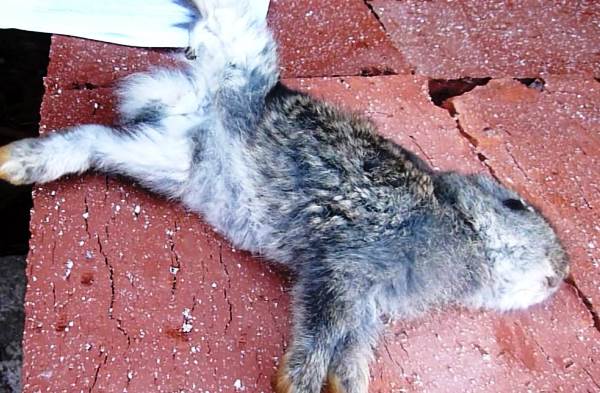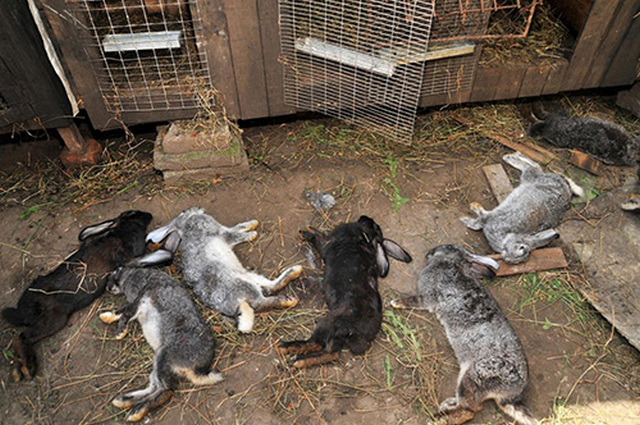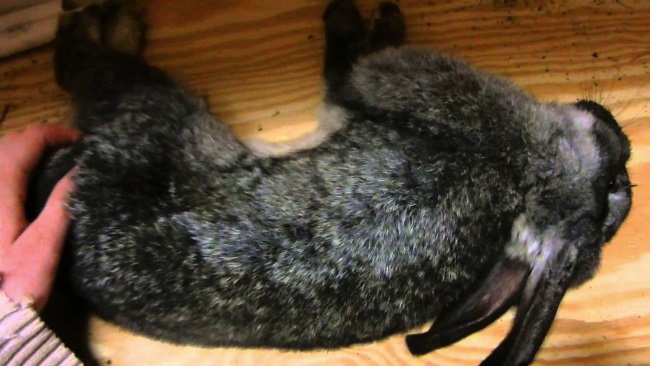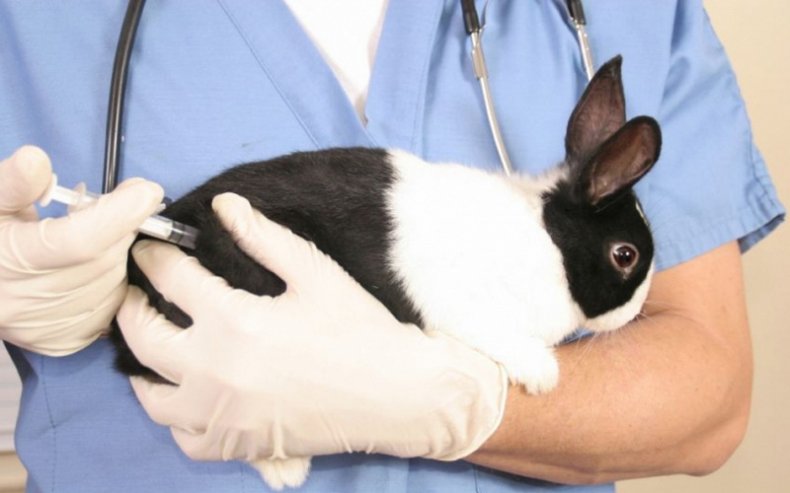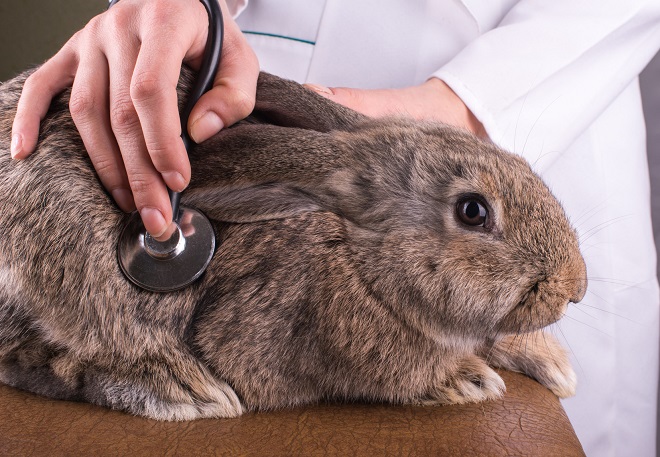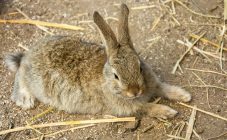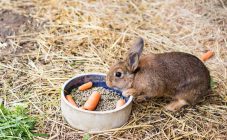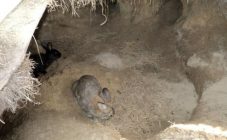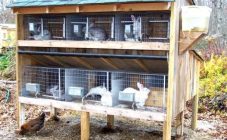Content:
This protozoan infectious disease in most cases leads to death. The main thing is to detect coccidiosis in rabbits in a timely manner. If you drink it on time, it will be possible to cure the disease, for that it is important to know how the disease manifests itself.
What is coccidiosis in rabbits
Coccidiosis can occur even in individuals that receive excellent care and are in good sanitary conditions. It is a common disease caused by the protozoal parasite coccidoa. Up to 25 types of coccidians can be in animals with two forms of the disease: hepatic and intestinal. Parasites are not dangerous to humans. The contaminated rabbit meat is used as food. Meat is allowed to be consumed in the stage of active reproduction of parasites and after treatment.
When breeding, it is important to know what coccidiosis is in a rabbit, what are the symptoms and treatment. Having identified the first signs of the disease and the causes of development, it will be possible to prevent a large percentage of animal mortality.
Causes of the disease, how the infection occurs
The life cycle of the parasite lasts 4-14 days. Infection occurs when food contaminated with oocysts is swallowed. After entering the body, the parasites begin to reproduce instantly asexually. They penetrate the tissues lining the intestinal wall. At the last stage, gametes appear that have the possibility of sexual reproduction. Oocytes are detected in the feces.
The presence of coccidoa affects intestinal and liver cells. Parasites inhibit the functioning of some cells. Induced villous atrophy will lead to impaired absorption of nutrients, electrolyte balance, anemia, hypoproteinemia.
The main causes of infection:
- lack of separation by age;
- drafts;
- poor nutrition;
- dampness;
- irregular cleaning in cages;
- feeding with wheat and alfalfa bran;
- use of poor quality feed.
Also, coccidia are transmitted from an already infected animal that has not been quarantined after purchase.
Symptoms and signs of the disease
Rabbit coccidiosis does not appear immediately after infection. The disease proceeds in an acute and chronic form, the first symptom appears after 3 days.
Intestinal coccidiosis mainly affects juveniles between 6 weeks and 5 months of age. Disease symptoms:
- decreased appetite;
- dehydration;
- weight loss;
- diarrhea.
If weight loss reaches 20%, death occurs within 24 hours. It is preceded by convulsions and paralysis. During necropsy, inflammation and edema are found, and the small intestine is separated from the intestine. Sometimes this condition is accompanied by bleeding and mucosal ulcers.
The hepatic form of coccidiosis affects rabbits of all ages. It is characterized by thirst, enlargement of the abdomen, liver and gallbladder. This form of coccidiosis lasts for several weeks. It ends in death in most cases, preceded by coma and diarrhea.
After necropsy, the veterinarian detects enlarged bile ducts. The surface of the liver is covered with white nodules. The hepatic form of coccidiosis is accompanied by a secondary bacterial infection, in particular, E. coli.
The severity of the disease depends on the number of oocytes swallowed. Examination of the stool reveals blood and mucus threads. Hematological studies show decreased hemoglobin, serum analysis - a decrease in sodium, chloride and an increase in potassium.
Coccidiosis treatment
Diagnosing coccidiosis is difficult. It is possible to detect the disease only by the signs and the presence of parasites in the feces.
The most commonly used coccidiostatics are:
- Rabbit coccid stop is effective in treatment and prevention. It is administered intravenously or orally. Instructions for use for rabbits with stop coccid: dosage - 0.14 mg per 1 kg of animal weight. Contraindicated during lactation and pregnant women.
- Iodinol is given for rabbits with a dosage of 2 ml per 1 kg of weight. The medicine must be diluted with water in a 1: 2 ratio. Give iodine solution 2 times a day for 10 days.
- Unicoccide for rabbits is given using a dispenser. It should be added to drinking water: 0.4 ml per 1 kg of body weight. Drink the medicine for 2 days.
- Baycox should not be taken in high dosages, as it can lead to anorexia. Treat twice, repeat the course in 5 days.
- Sulfadimethoxine is an antimicrobial drug. The therapeutic effect appears after 24-48 hours from the start of admission. Give 2 times a day: 0.2 g per 1 kg of animal weight. Drink for 5 days, take a break for 4 days and repeat the course of treatment.
- Solikox is added to water. Dosage: 0.4 ml per 1 kg of mass, diluted in 1 liter of water. Give rabbits to drink during the day. Solikox is not prohibited to be combined with other drugs.
- Furazolidone is added with food. Give 30 ml per 1 kg of mass. The treatment lasts 6–8 days, drink 2 times a day. Furazolidone is contraindicated to give if the rabbit is pregnant.
In the complex, it is recommended to give antibiotics such as phthalazole, chloramphenicol and norsulfazole. The duration of treatment is 5 days, then a break is made for 5 days and the course is repeated.
You can also drink it with folk remedies. They are no less effective, but it is worth remembering that the amount of medicine cannot be increased.
Any traditional method of treatment is carried out twice. The funds act slowly, it is recommended to give it at the same time as medicines.
Folk ways:
- Potassium permanganate is given along with iodine. This method is used for the treatment and prevention of disease. How to give iodine to a rabbit and potassium permanganate: 1-2 days - drink water, 3 - a pale pink solution of potassium permanganate, 4-5 - pure water, 6 - iodine (1 drop per 1 liter of water).
- You can solder rabbits with ordinary iodine. Veterinary experts recommend using a 5% solution. It prevents parasites from developing and has a beneficial effect on the animal's body. The solution improves disease resistance. Iodine for rabbits is diluted as follows: 1 ml per 100 ml of water. Give within 15 days, 100 ml per day.
- Apple cider vinegar is a good remedy for the prevention and treatment of disease. Breeders recommend adding only a natural remedy to the drink. Apple cider vinegar normalizes weight, kills parasites. The medicine is started from 3 weeks and continues to drink until 4 months. How much to dilute with water: 2 tbsp. spoons for 5 liters.
- For bloating during illness, vodka is given. You need to breed 1 tbsp. spoon in 1 liter of water for young animals, 2 tbsp. spoons for an adult
All domestic rabbits should be treated. If others show no symptoms, that doesn't mean they don't have parasites. It must be remembered that the first symptoms appear 3 days after infection. It is important to carry out prevention and drink the drug.
What drug can be given to pregnant rabbits? There are few medicines, most of them are contraindicated. In this case, folk remedies are allowed.
Preventive measures
Leaves rich in tannin (willow, hazelnut, oak, ash, fruit trees and pine) are excellent in preventing coccidiosis. Rabbits should be given them several times a week along with twigs.
Animals should be given plenty of water, washed vegetables and fed with dry leaves.
Before you solder rabbits to prevent disease, it is worth providing the right conditions.
Preventive measures:
- clean cells regularly;
- disinfect cells using ammonia solution;
- feed with nutritious food that supports the digestive system;
- when choosing a new rabbit, quarantine it away from other animals for 1 month;
- keep adults in individual cages, and young animals in groups of no more than 25;
- once a week, treat the cells with boiling water or ultraviolet light (in the summer, it is better to take the houses outside);
- to wash the nipples for the nursing, so that the young do not become infected (it is worth remembering that the adult is the carrier);
- organize feeding in such a way that feces do not fall into the feed, for example, do not put the feeders on the floor, but hang them a few centimeters from it.
How to give rabbits to drink to prevent disease?
- Robencox is well tolerated by the ears. The medication must not be used with feed antibiotics.
- Unicoccid is also given for the prevention of disease, use as in treatment.
- Use the drug zoalen. Drink for 10 days, add 250 mg of the product to 1 kg of feed. Give daily.
Prevention of coccidiosis with drugs is carried out once a month, repeated 12 times a year. You also need to introduce vitamins of groups A and B into the diet.
Continuous proper care and taking preventive medications will prevent the development of coccidiosis. The main condition is to properly care for rabbits, minimizing the entry of parasites into the body.
